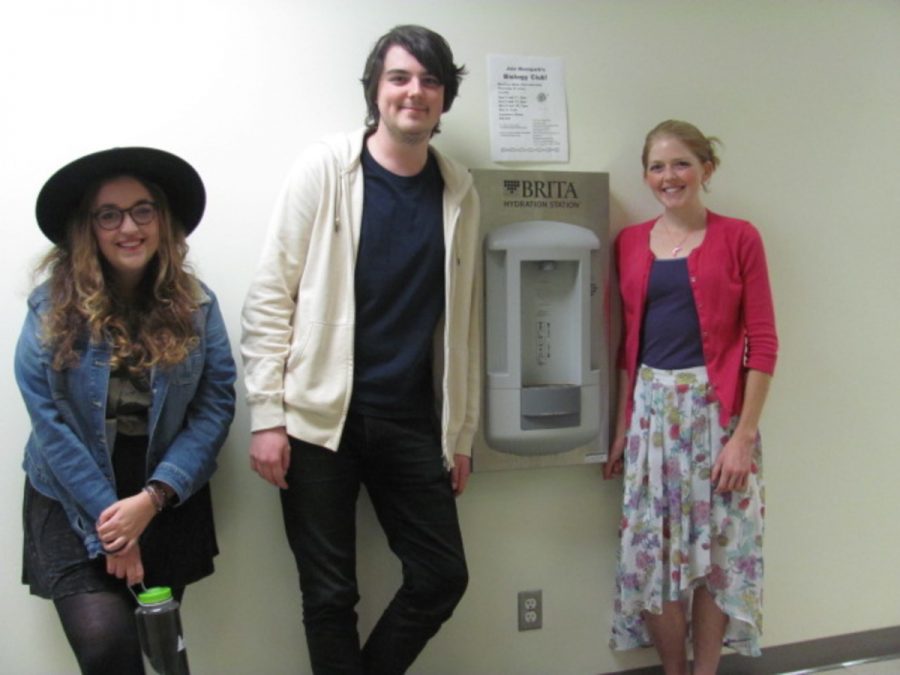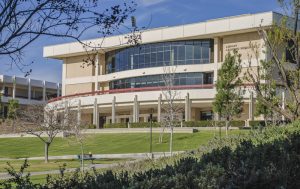College, student government to install six new hydration stations
Associated Students Director of Academic Affairs Carmel Gutherz, left, Associated Students Director of External Affairs Patrick Nordstrom, and Lauren Somerville believe that installing more hydration stations would make Moorpark a more sustainable campus. Photo credit: Son Ly
November 20, 2015
More hydration stations are coming to Moorpark College thanks to a partnership between Associated Students and the administration.
Carmel Gutherz, A.S. director of academic affairs and Patrick Nordstrom, A.S. director of external affairs believe that more hydration stations will encourage students to buy refillable water bottles rather than plastic bottles in bulk, and save them money.
“It’s a move to make Moorpark become more sustainable while reducing plastic waste,” said Gutherz. “It’d be more convenient for students to refill their bottles instead of walking long distances to the building[s] that have hydration stations.”
Gutherz and Nordstrom submitted their proposal for new hydration stations to the Campus Environment Committee on Oct. 18. In response, the committee leader John Sinutko has worked with a plumber to find out the viability for the locations that the A.S. proposed.
“I am really pleased to work with Associated Students in this cooperative endeavor,” Sinutko said.
Currently, Fountain Hall, the Campus Center and the Performing Arts Center are the only buildings that have at least one hydration station.
Initially, the A.S. hoped to install a total of eight hydration stations in the following buildings: Academic Center, Exotic Animal Training and Management, the gym, the library, the Humanities and Social Sciences, and either the Physical Science or the Life Science/Mathematics/Computer Studies.
A.S. proposed Elkay Double Stations as the desired model because it allows students to refill their bottles and drink from the fountains as well. They also wanted the new hydration stations to be built over the existing water fountains.
However after working with the plumber, Nordstrom said the HSS, PS and LMC locations don’t work because the proposed model is only suitable for indoors. Furthermore, the outside locations are too exposed which would require a lot of maintenance. Nordstrom said the outdoor units for hydration stations aren’t desirable because they don’t offer filtered and cold water.
Consequently, the A.S. can only build six hydration stations instead of eight as part of the original plan. As a solution, Nordstrom said the EATM location would be a tryout to see if the model would sustain in an outdoor setting.
The total cost to install the six hydration stations is $12,210, and will be split evenly between A.S. and the administration.
Sinutko said the proposal must still go through the Campus Environment Committee and then to the Consultation Council, a governance committee representing the district’s and colleges’ constituencies for possible approval. If approved, procurement will begin immediately. The length of time to complete the project depends on other maintenance issues that arise and take precedence, however, Nordstrom hopes it will be completed in spring.








